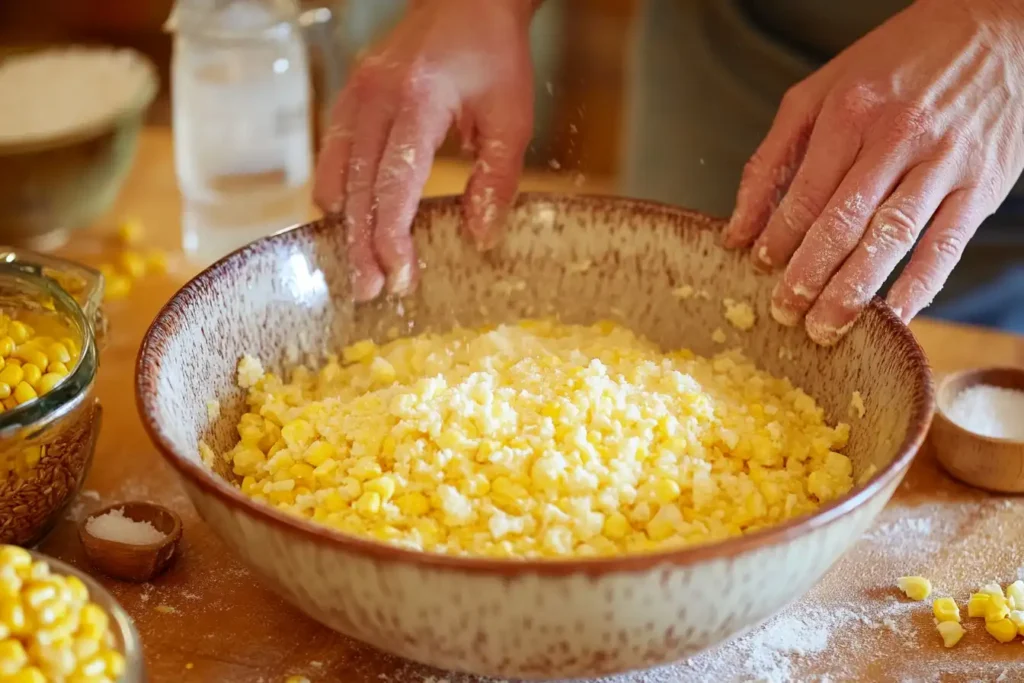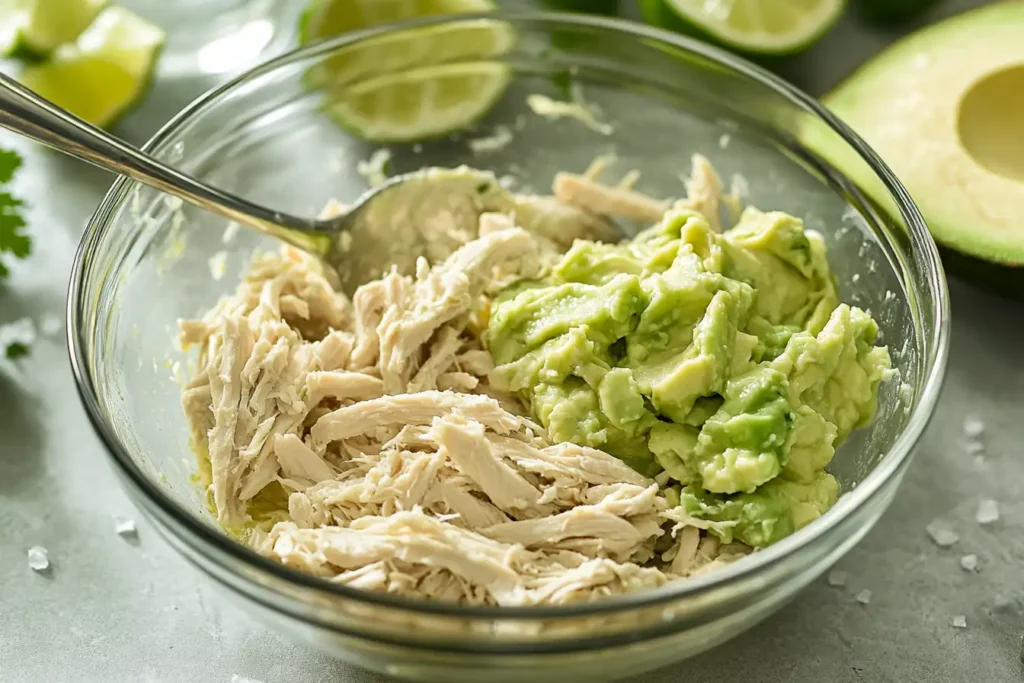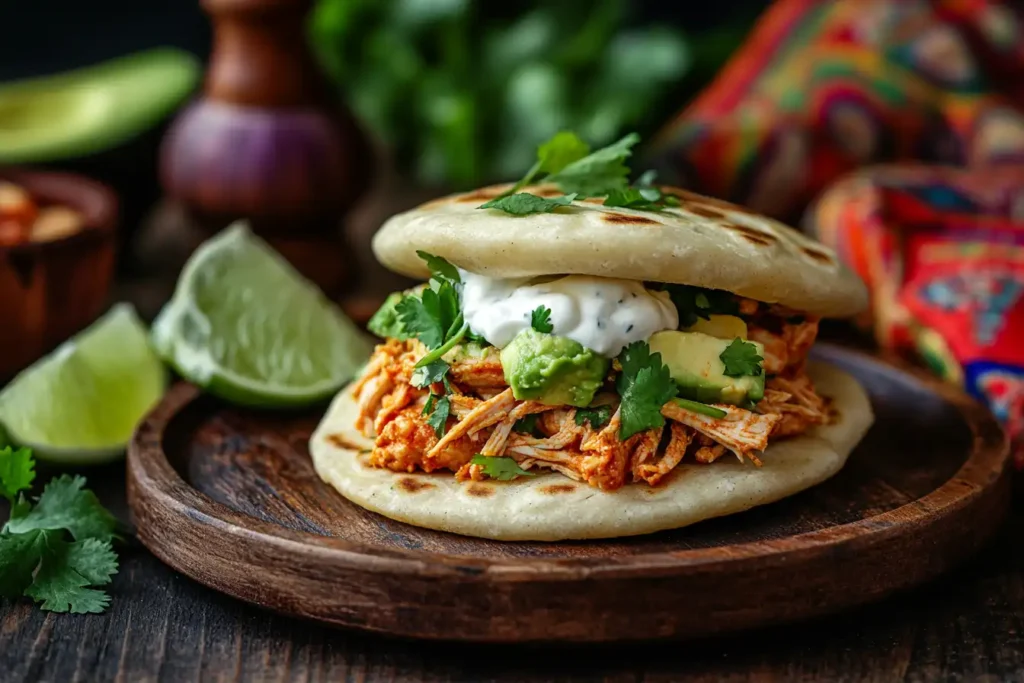The Reina Pepiada is more than just a dish; it’s a cultural gem that carries a captivating story. This iconic Venezuelan arepa is rich in history, bursting with flavor, and deeply rooted in tradition. But why is it called Reina Pepiada? The answer lies in a unique blend of beauty, ingenuity, and Venezuelan pride. Through this article, we’ll uncover the origins of this fascinating name, its ingredients, preparation method, and much more. Let’s delve into the world of Reina Pepiada and explore its legacy.
Historical Background of Arepas and Reina Pepiada
The story of the Reina Pepiada begins with the arepa itself, a staple of Venezuelan cuisine. Arepas, those golden cornmeal patties, have been a culinary cornerstone for centuries. Their origins date back to pre-Columbian times when Indigenous peoples across northern South America ground maize to create versatile flatbreads.
Origin and Evolution of Arepas and Their Role in Reina Pepiada
Arepas emerged as a daily sustenance food, evolving through generations and regions. Originally cooked on hot stones, they adapted over time to embrace modern cooking methods like grilling, frying, or baking. What makes the arepa special is its versatility—it’s both a blank canvas for fillings and a standalone delicacy.
Today, arepas have transcended their humble beginnings, symbolizing unity in a country known for its diverse regions and traditions. This evolution set the stage for the creation of unique variations like the Reina Pepiada.
Cultural Significance in Venezuela
In Venezuela, the arepa is much more than a meal; it’s a reflection of identity and culture. Families gather to make arepas for breakfast, lunch, and even dinner, turning this dish into a communal experience. Whether filled with simple cheese or elaborate mixtures, the arepa stands as a testament to Venezuelan culinary creativity.
Through the years, specific variations like Reina Pepiada have emerged as cultural icons, each with its own story to tell. This particular arepa represents a beautiful convergence of history, food, and Venezuelan pride, as we’ll discover in the following sections.
The Birth of Reina Pepiada
The Reina Pepiada has a fascinating origin story rooted in celebration, ingenuity, and national pride. This particular variation of the arepa was born in the mid-20th century, a time when Venezuela was experiencing cultural and economic flourishing. A historic moment tied to beauty and resilience inspired the name and concept behind the dish.
Susana Duijm: The Inspiration Behind Reina Pepiada
In 1955, Susana Duijm became the first Venezuelan—and indeed the first Latina—to win the prestigious Miss World pageant. Her victory was a monumental moment, filling the hearts of Venezuelans with immense pride. Susana’s beauty, charisma, and grace made her a beloved icon, and her influence extended far beyond the pageant stage.
Her triumph not only symbolized a sense of unity and hope for a nation eager to make its mark on the global stage, but it also inspired the Álvarez brothers, who owned a famous arepa stand in Caracas, to create a dish that would honor her.
Creation by the Álvarez Brothers
The Álvarez brothers earned recognition for their culinary creativity and passion for showcasing Venezuelan flavors. They named their new arepa the Reina Pepiada—a nod to Susana Duijm as the reigning queen (Reina). The word pepiada, which loosely translates to “curvaceous” or “full-figured,” was a term of endearment that highlighted Susana’s charm and beauty.
To match the grandeur of its namesake, the creators filled the Reina Pepiada with a luxurious mixture of shredded chicken, creamy avocado, and mayonnaise. This combination quickly gained popularity, becoming a favorite among Venezuelans and a testament to the country’s love for creativity in the kitchen.
Meaning Behind the Name “Reina Pepiada”
The name Reina Pepiada is more than just a label; it’s a rich blend of linguistic flair and cultural history. Understanding its meaning provides insight into the societal context of 1950s Venezuela and its affection for combining food with storytelling.
Translation and Interpretation
The phrase Reina Pepiada directly translates to “curvaceous queen” in English. However, the interpretation goes beyond the literal. In Venezuelan slang, pepiada carries a playful and affectionate tone, often used to describe someone attractive or charming. By pairing this term with Reina, which means queen, the name celebrates both the dish and its muse, Susana Duijm.
This name not only highlights the cultural appreciation for beauty but also underscores the Venezuelan tradition of infusing everyday life—and cuisine—with humor, warmth, and admiration.
Societal Context in the 1950s
During the 1950s, Venezuela was enjoying a period of prosperity, cultural growth, and international recognition. The victory of Susana Duijm at Miss World was a symbol of this success. Venezuelans embraced the idea of celebrating their achievements through food, and the Álvarez brothers’ creation became a delicious expression of national pride.
The name also reflects the values of the era, where beauty and elegance were celebrated alongside ingenuity and cultural heritage. The Reina Pepiada continues to serve as a flavorful reminder of a golden age in Venezuelan history, connecting generations through its name and taste.
Ingredients of Reina Pepiada
The Reina Pepiada is beloved not only for its fascinating history but also for its irresistibly delicious ingredients. This dish strikes a perfect balance between simplicity and sophistication, making it a staple in Venezuelan cuisine.
Traditional Components
At its heart, this dish is built on three primary ingredients: shredded chicken, avocado, and mayonnaise. These are combined into a creamy, flavorful filling that sits inside the quintessential Venezuelan arepa, made from cornmeal dough.
- Arepa Base: The dough is crafted from pre-cooked cornmeal (harina PAN), water, and a pinch of salt, forming the iconic golden shell.
- Filling: Shredded chicken provides a hearty texture, while avocado contributes a rich, buttery flavor. Mayonnaise binds everything together, ensuring a smooth consistency.
- Seasonings: A pinch of salt, a dash of black pepper, and optional lime juice enhance the overall taste, elevating the natural flavors of the ingredients.
This traditional combination is as satisfying as it is timeless, showcasing the heart of Venezuelan comfort food.
Variations and Modern Twists
Over time, chefs and home cooks have adapted the Reina Pepiada to include modern variations that cater to diverse palates.
- Add-ons: Some versions incorporate extras like diced onions, cilantro, or green peas to add texture and flavor.
- Healthier Swaps: Greek yogurt is occasionally used instead of mayonnaise for a lighter filling.
- Creative Fillings: Variations might include smoked chicken, turkey, or even shrimp to experiment with protein choices.
- Vegan Options: Substitutes like mashed chickpeas or tofu create plant-based versions that honor the essence of the dish while catering to dietary preferences.
No matter the adaptation, the Reina Pepiada remains a delightful celebration of its original inspiration.
Preparation Method
Making a Reina Pepiada involves crafting both the arepa and the filling. While it might seem elaborate, the process is surprisingly straightforward and incredibly rewarding.
Making the Arepa Dough

The foundation of any Reina Pepiada is the arepa shell, and preparing it is an art as much as a science:
- Ingredients: Combine 2 cups of pre-cooked cornmeal, 2 ½ cups of warm water, and a pinch of salt in a mixing bowl.
- Mixing: Gradually mix the water into the cornmeal, kneading until the dough reaches a smooth, pliable consistency.
- Shaping: Divide the dough into balls and flatten them into discs about ½ inch thick.
- Cooking: Cook the arepas on a hot griddle or skillet for about 5 minutes on each side, until they form a golden crust. Alternatively, finish them in the oven for a fluffier texture.
Crafting the Filling

The filling is what gives the Reina Pepiada its unforgettable flavor:
- Prepare the Chicken: Boil or roast chicken breasts until tender, then shred them finely.
- Mash the Avocado: Scoop out ripe avocados and mash them into a creamy consistency, leaving a few chunks for texture.
- Mix Ingredients: Combine the shredded chicken, mashed avocado, and a generous dollop of mayonnaise in a bowl. Season with salt, black pepper, and a squeeze of lime juice for brightness.
- Assemble: Slice the arepa open to form a pocket, generously stuff it with the filling, and serve immediately.
Whether traditional or with a modern twist, making a Reina Pepiada is as much about enjoying the process as it is savoring the end result.
Popularity and Spread of Reina Pepiada
The Reina Pepiada has gradually grown from a humble street food creation into an iconic dish that truly represents the culinary heart of Venezuela. Furthermore, its irresistible taste and fascinating story have not only made it a staple at home but also turned it into a symbol of Venezuelan culture abroad.
National Popularity in Venezuela
Within Venezuela, the Reina Pepiada is a beloved comfort food. Found in areperas (arepa shops) across the country, it’s often considered the gold standard for stuffed arepas. Its creamy, flavorful filling appeals to all generations, making it a favorite for breakfast, lunch, or dinner.
More than just a meal, the Reina Pepiada serves as a unifying dish in a country known for its regional diversity. Every family has its unique twist, adding a personal touch to the classic recipe. Its association with beauty and pride, stemming from Susana Duijm’s historic win, has only strengthened its cultural significance.
International Recognition
Beyond Venezuela’s borders, the Reina Pepiada has become a culinary ambassador, introducing the world to the richness of Venezuelan cuisine. As Venezuelan communities have spread globally, so too has the popularity of the Reina Pepiada.
Arepa restaurants in cities like Miami, Madrid, and London feature this iconic dish on their menus, delighting both expatriates and newcomers. Its simple yet sophisticated flavor profile makes it universally appealing, cementing its status as an international favorite.
Cultural Impact and Legacy
The Reina Pepiada isn’t just a meal; it’s a cultural artifact that reflects Venezuela’s values, history, and culinary innovation. Its legacy continues to evolve, connecting the past with the present in meaningful ways.
Symbolism in Venezuelan Cuisine
In Venezuelan cuisine, the Reina Pepiada proudly stands as a symbol of creativity and pride. Moreover, its association with Susana Duijm’s beauty and success highlights the country’s remarkable ability to celebrate achievements through food.
Moreover, the dish encapsulates the Venezuelan spirit of hospitality. Sharing a Reina Pepiada at the dinner table is an expression of warmth, friendship, and national pride. It’s a dish that resonates deeply with Venezuelans, offering a taste of home no matter where they are.
Influence on Other Dishes
The Reina Pepiada has inspired countless culinary innovations, both within and outside Venezuela. Cooks and chefs have reimagined its creamy chicken-and-avocado filling in wraps, sandwiches, and salads.
Additionally, its popularity has paved the way for other creative arepa fillings, each drawing on regional ingredients and traditions. The legacy of the Reina Pepiada continues to influence chefs and home cooks, ensuring that its story and flavors remain relevant in modern cuisine.
Whether enjoyed traditionally or through its adaptations, the Reina Pepiada is a dish that carries its cultural and culinary legacy proudly.
Frequently Asked Questions (FAQs)
The Reina Pepiada is a dish rich in history and cultural significance, and it often raises intriguing questions. Therefore, here are the answers to some of the most frequently asked ones.
Where did Reina Pepiada get its name?
The name Reina Pepiada honors Susana Duijm, Venezuela’s first Miss World, crowned in 1955. Her victory symbolized national pride, and the Álvarez brothers, inspired by her success, named their new arepa creation after her. The term “Reina” translates to “queen,” while “pepiada” is a colloquial term referring to someone full-figured or curvaceous, a playful nod to her charm and beauty.
What does pepiada mean?
In Venezuelan slang, pepiada is often used to describe someone attractive, lively, or full of personality. The term adds an affectionate, colloquial flair to the name Reina Pepiada. It captures not only the physical beauty of Susana Duijm but also her charisma and the admiration she inspired across the nation.
What is Reina Pepiada made of?
The traditional Reina Pepiada filling consists of shredded chicken, creamy avocado, and mayonnaise, which is seasoned with salt, pepper, and a hint of lime juice. Moreover, this rich, flavorful mixture is encased in a freshly cooked arepa, a flatbread made from pre-cooked cornmeal dough. Additionally, the simplicity of its ingredients enhances the dish’s textures and flavors, allowing them to truly shine.
What is a Venezuelan sandwich called?
Venezuelans don’t refer to arepas as sandwiches, but they serve a similar purpose in the cuisine. The arepa, made from cornmeal, is sliced open and filled with a variety of ingredients, much like a sandwich. The Reina Pepiada is one of the most popular arepa fillings, beloved for its creamy, savory taste.
Conclusion
The Reina Pepiada is more than a delicious dish—it’s a culinary homage to Venezuelan culture, history, and pride. From its creation inspired by a beauty queen to its worldwide recognition as a symbol of Venezuelan cuisine, this arepa encapsulates the nation’s heart and soul. Its rich flavors and captivating story continue to delight food lovers everywhere, ensuring its legacy lives on for generations to come. Whether you’re tasting it for the first time or revisiting its comforting flavors, the Reina Pepiada promises an unforgettable experience.

